As someone who loves to experiment in the kitchen, I’ve often found myself pondering the differences between sour cream and yogurt.
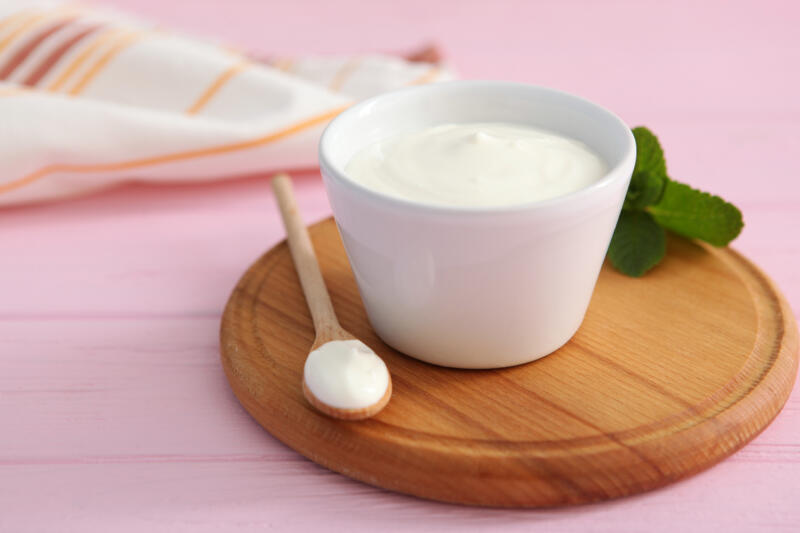
Both are creamy, tangy, and incredibly versatile, yet each brings its unique qualities to the table.
Whether it’s the fat content, taste, or protein content, understanding these differences can truly elevate your culinary creations.
So, let’s dive into the world of sour cream and yogurt, and discover how these two dairy products can add a delicious twist to your recipes.
In this article:
Major Difference Between Sour Cream and Yogurt
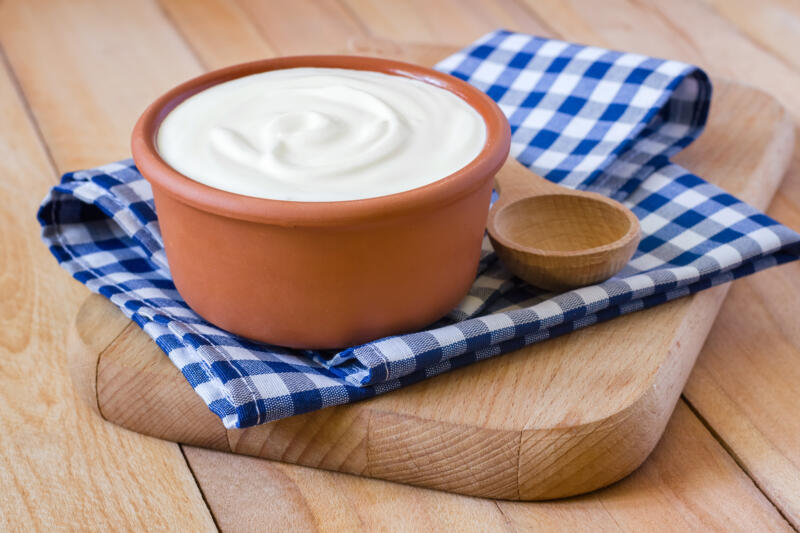
Originating from different corners of the world, each of these dairy products has woven itself into the fabric of various cuisines.
Sour cream, with its roots in Eastern Europe, and yogurt, a staple in many Middle Eastern and South Asian countries, have both played significant roles in shaping the culinary landscape of these regions.
Beyond their taste and texture, understanding the nutritional aspects such as fat and protein content of these ingredients can truly enhance your cooking experience.
1. Fat Content
The fat content of sour cream and yogurt is one of the key differences between these two dairy products.
Sour cream, made from heavy cream, is notably higher in fat, especially saturated fat. It contains a whopping 10 g of saturated fat per 100 grams.
On the other hand, regular yogurt, which is made from milk, has significantly less saturated fat, clocking in at just 2 g per 100 grams.
This makes yogurt a healthier choice for those watching their fat intake.
Moreover, yogurt is often available in no-fat or low-fat options, providing even more flexibility for health-conscious consumers.
2. Tangy Taste
The tangy taste of sour cream and yogurt is another distinguishing factor.
Sour cream has a tangy, tart, and rich taste that can add depth to a variety of dishes.
Yogurt, while also tangy, has a milder sour taste that is less overpowering.
Both sour cream and yogurt owe their distinctive tangy flavors to the process of fermentation.
This culinary transformation occurs when beneficial bacteria, such as Lactobacillus, are introduced to the dairy products.
These bacteria consume the lactose, or sugar, present in the cream or milk and produce lactic acid as a byproduct.
It’s this lactic acid that imparts the characteristic tangy flavor to both sour cream and yogurt.
In addition to enhancing the taste, the fermentation process also contributes to the thick, creamy texture of these dairy delights.
3. Texture
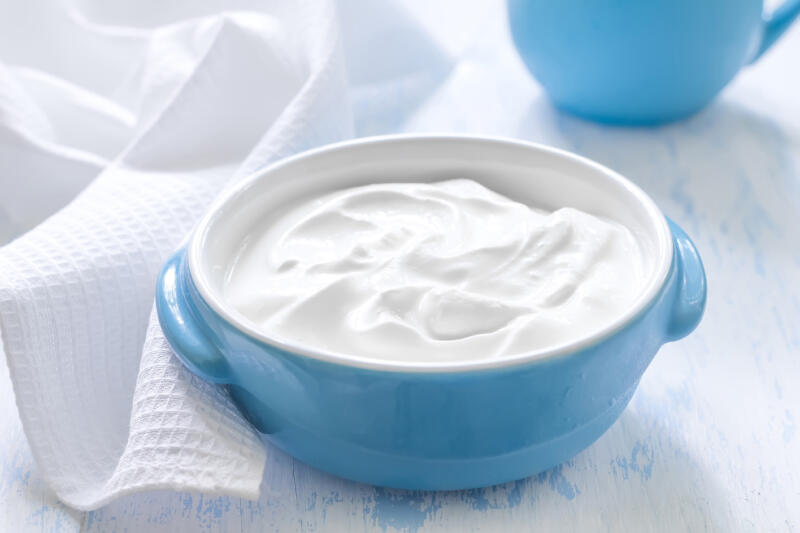
The textures of these two ingredients also differ.
Sour cream has a thicker, creamier texture, largely due to its higher fat content. This creaminess makes it an excellent choice for adding richness to recipes.
On the other hand, yogurt has a softer, smoother texture. While it’s less creamy than sour cream, its consistency can provide a refreshing lightness to dishes.
The fat content of each product plays a crucial role in determining their texture and consistency, making each one suitable for different culinary applications.
4. Protein Content
When it comes to protein content, there are both similarities and differences between sour cream and yogurt.
Sour cream contains 2.4g of protein per 100 grams, while regular yogurt has a slightly higher protein content of 3.5g.
However, if you’re looking for a protein boost, Greek yogurt is the way to go.
With 5.6g of protein per 100 grams, it has 3.2g more protein than sour cream, making it a nutritious addition to your meals.
Cup of Each for Comparison
When substituting one for the other in recipes, it’s important to understand the equivalent measurements of sour cream and yogurt.
One cup of sour cream can be replaced with 200 grams of whole milk Greek yogurt, plus 3 tablespoons of butter and 2 teaspoons of water.
This combination mimics the fat content and creaminess of sour cream.
Conversely, if you need to substitute 1 cup of yogurt, you can use 200 grams of whole milk plain yogurt and 3 tablespoons of butter, without the need for extra water.
This will provide a texture and sourness comparable to yogurt.
How Are They Made?
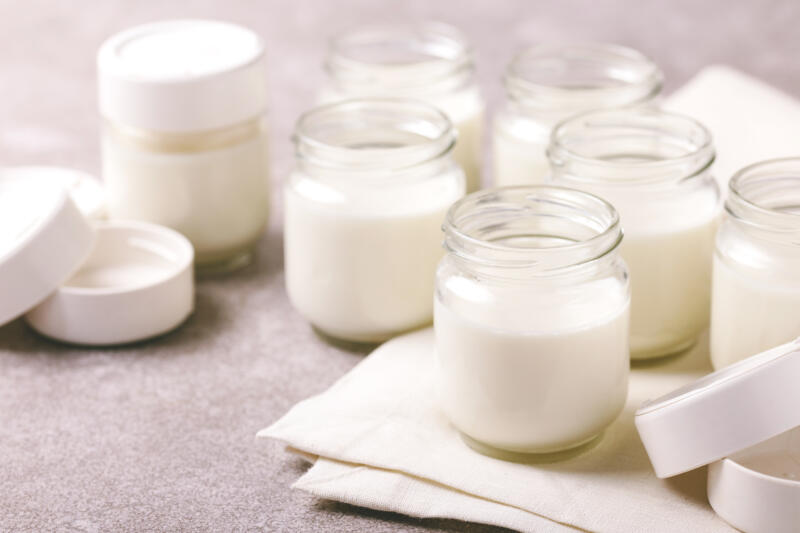
Understanding the production processes of sour cream and yogurt can provide further insight into their differences.
Let’s take a closer look at how these two dairy products are made.
Sour Cream Production Process
The production process of sour cream begins with a mixture of pasteurized dairy cream and milk.
Lactic acid bacteria are added to this mixture, which is then heated and aged for 12 to 48 hours. This process, known as bacterial fermentation, results in the formation of lactic acid.
The lactic acid imparts the signature tangy flavor to sour cream and enhances its thick, creamy texture.
There are also variations of sour cream available, and it’s even possible to make homemade sour cream using heavy whipping cream, whole milk, and white vinegar as fermented and thickening agents.
Yogurt Production Process
The production process of yogurt involves several steps, starting with pasteurization. This process removes unwanted bacteria from the milk, ensuring a safe and clean product.
Next, a yogurt culture is added, which helps to thicken the mixture. The mixture then undergoes bacterial fermentation, which gives yogurt its characteristic tangy flavor.
Finally, the yogurt is strained to achieve the desired consistency. The straining process can be adjusted to produce different types of yogurt, such as regular, low-fat, or Greek yogurt.
Uses of Each Product
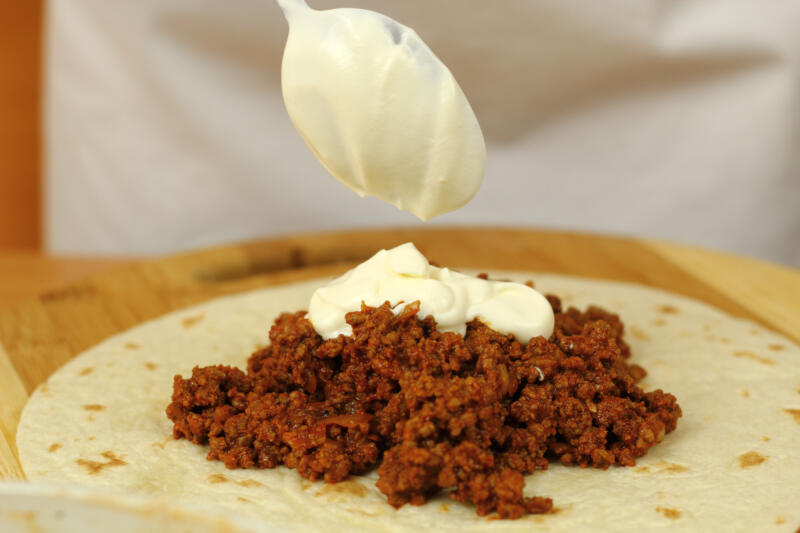
Sour cream and yogurt are versatile ingredients that can be used in a variety of dishes.
From toppings and dips to main courses and desserts, these dairy products can enhance the flavor and texture of many recipes. Let’s explore some of the common uses of sour cream and yogurt in cooking and baking.
Use of Sour Cream in Recipes
Sour cream is a popular ingredient in many recipes due to its rich, tangy flavor and creamy texture.
It’s often used as a topping for baked potatoes and chili, adding a cool and creamy contrast to these hot dishes. Sour cream also serves as a base for many dips, providing a rich and tangy backdrop for other flavors.
In soups and sauces, sour cream can add a creamy thickness and a subtle tanginess.
Moreover, sour cream can be used in baked goods like cookies, cakes, and breads, where it adds moisture and a unique flavor that sets these treats apart.
Use of Yogurt in Recipes
Yogurt plays a versatile and vital role in many recipes across various cuisines.
Its velvety texture paired with its tangy taste makes it a versatile ingredient for both sweet and savory creations.
In Greek cuisine, yogurt is a key ingredient in tzatziki, a refreshing dip made with yogurt, cucumber, garlic, and dill.
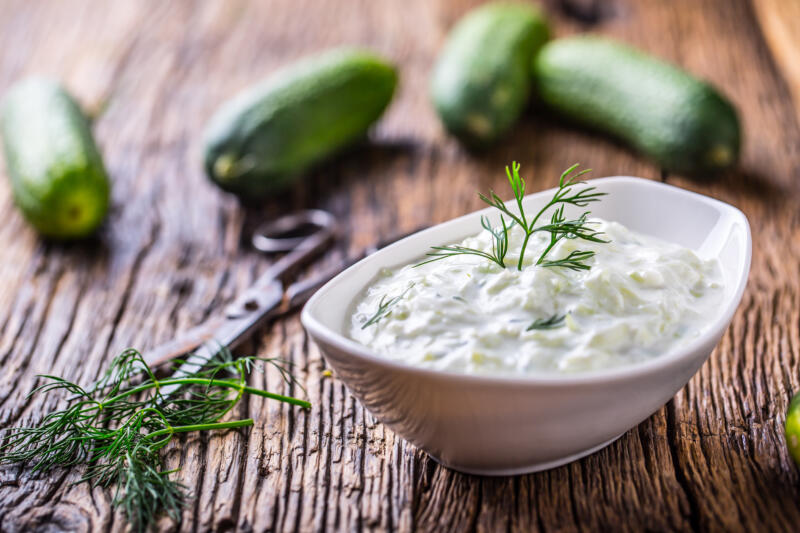
It’s also used in moussaka, where it forms part of the creamy béchamel sauce that tops this layered eggplant and meat dish.
In Turkish cuisine, yogurt is used in a variety of dishes, such as cacik, a dish similar to tzatziki, and in manti, a type of dumpling served with a tangy yogurt sauce.
In Indian cuisine, yogurt is used in a variety of dishes, from cooling raitas and tangy marinades to rich and creamy curries like tikka masala.
It’s also used in lassi, a popular refreshing drink that can be sweet or savory.
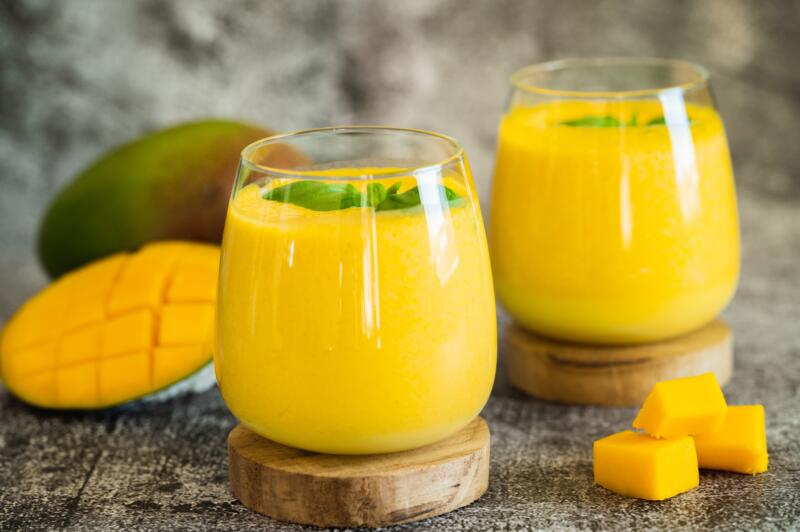
In Eastern European cuisine, yogurt is used in cold soup recipes like tarator, a Bulgarian cucumber and yogurt soup that’s perfect for hot summer days.
In American dishes, yogurt frequently serves as a healthier substitute for sour cream or mayonnaise in sauces, dressings, and baked items.
It’s also a popular base for smoothies and breakfast bowls, topped with a variety of fruits, nuts, and granola.
These are just a few examples of the many ways yogurt is used in recipes around the world, showcasing its versatility and universal appeal.
Sour Cream Substitutes Using Yogurt
If sour cream is unavailable or you’re aiming for a healthier choice, yogurt is an excellent stand-in.
Greek yogurt, known for its dense texture and tangy taste, can easily replace sour cream in many dishes.
Whole milk yogurt can also be used, especially in recipes where a thinner consistency is acceptable.
Even homemade yogurt can serve as a sour cream substitute, allowing you to control the fat content and flavor.
Using yogurt as a substitute not only provides a similar tangy flavor and creamy texture, but it also offers higher vitamin and calcium content compared to sour cream, making it a nutritious alternative.
Closing Thoughts
We’ve journeyed through the fascinating world of sour cream and yogurt, exploring their differences in fat content, taste, protein content, and even how they’re made.
We’ve also looked at how each can be used in recipes and how yogurt can be a healthy substitute for sour cream.
I hope this information inspires you to experiment with these two ingredients in your kitchen.
If you have any questions or comments, or if you’ve discovered a new way to use sour cream or yogurt in your recipes, please share your thoughts.
Happy cooking!